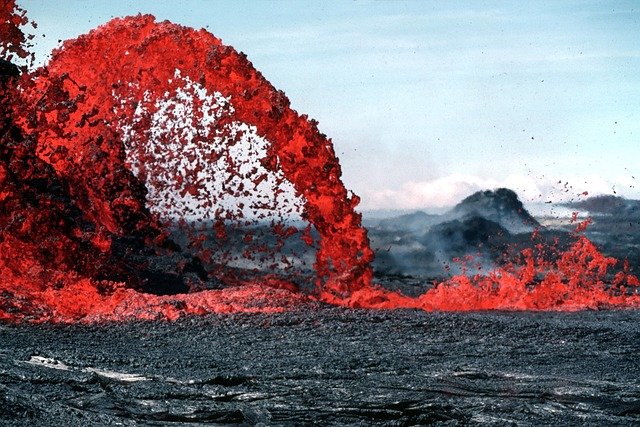Volcano Tourism: Exploring Earth's Fiery Wonders
The allure of volcanoes has captivated humans for centuries, their raw power and beauty inspiring awe and curiosity. Today, a growing trend in adventure travel is emerging: volcano tourism. This thrilling pursuit allows intrepid explorers to witness the Earth's most dynamic geological features up close, offering a unique blend of natural wonder, scientific insight, and adrenaline-pumping experiences.

Today, volcano tourism has evolved into a diverse industry, offering experiences ranging from casual sightseeing to extreme adventure. Countries with significant volcanic activity, such as Iceland, Hawaii, and Indonesia, have embraced this niche market, developing infrastructure and tour packages to cater to volcano enthusiasts.
Types of Volcano Experiences
Volcano tourism encompasses a wide range of activities, catering to various interests and fitness levels. For the casual traveler, many dormant or extinct volcanoes offer scenic hiking trails and panoramic viewpoints. These relatively safe experiences allow visitors to explore volcanic landscapes, learn about geological processes, and enjoy breathtaking vistas.
More adventurous travelers can opt for guided tours to active volcanoes, where they might witness steam vents, bubbling mud pools, or even lava flows. Some tour operators offer nighttime excursions, allowing visitors to see the mesmerizing glow of lava against the dark sky.
For the truly daring, there are extreme volcano experiences. These might include helicopter tours over active craters, overnight camping near volcanic sites, or even descending into dormant volcano chambers. Such activities require careful planning, expert guides, and a willingness to accept certain risks.
Safety Considerations and Responsible Tourism
While volcano tourism can be exhilarating, it’s crucial to prioritize safety and environmental responsibility. Active volcanoes pose inherent risks, including toxic gases, unstable terrain, and the potential for sudden eruptions. Reputable tour operators work closely with volcanologists and local authorities to monitor volcanic activity and ensure visitor safety.
Travelers should always follow guide instructions, stay on designated paths, and respect any restricted areas. It’s also essential to be prepared with appropriate gear, including sturdy hiking boots, protective eyewear, and respiratory masks when necessary.
Responsible volcano tourism also means minimizing environmental impact. Visitors should adhere to Leave No Trace principles, avoiding the removal of rocks or other natural materials and properly disposing of waste. Some volcanic areas are also culturally significant to local communities, requiring respect for traditions and beliefs.
The Educational Value of Volcano Tourism
Beyond the thrill of adventure, volcano tourism offers significant educational opportunities. Many volcanic sites feature interpretive centers and guided tours led by geologists or trained naturalists. These experiences provide insights into Earth’s geological processes, the formation of landscapes, and the interplay between volcanoes and ecosystems.
For students and amateur scientists, volcano tourism can be a hands-on learning experience, bringing textbook concepts to life. Some tour operators even offer specialized educational programs, combining field observations with lectures and workshops.
Moreover, volcano tourism can raise awareness about natural hazards and disaster preparedness. By understanding the power and unpredictability of volcanoes, visitors gain a deeper appreciation for the forces shaping our planet and the importance of scientific monitoring and community preparedness.
The Future of Volcano Tourism
As interest in experiential travel grows, volcano tourism is likely to continue evolving. Advances in technology are opening up new possibilities, such as real-time monitoring apps that allow visitors to track volcanic activity. Virtual reality experiences may soon offer immersive volcano tours for those unable to visit in person.
However, the industry also faces challenges. Climate change is affecting volcanic activity in some regions, potentially altering travel patterns. There’s also an ongoing need to balance tourism development with conservation efforts and respect for local communities.
Looking ahead, sustainable practices will be crucial for the long-term viability of volcano tourism. This may include implementing visitor caps, developing eco-friendly infrastructure, and investing in community-based tourism initiatives that benefit local populations.
Lava-Hot Tips for Volcano Visitors
-
Always book tours with licensed, experienced operators
-
Check travel advisories and volcanic activity reports before your trip
-
Pack appropriate gear, including sturdy shoes, sun protection, and layers
-
Stay hydrated and be prepared for changing weather conditions
-
Respect all safety barriers and guidelines set by park authorities
-
Consider purchasing travel insurance that covers volcanic activity
-
Learn basic first aid and be aware of evacuation procedures
-
Capture memories responsibly, avoiding risky photo opportunities
Volcano tourism offers a unique window into the Earth’s fiery heart, combining adventure, education, and natural wonder. As this trend continues to grow, it promises to deepen our understanding of our planet’s geological processes while providing unforgettable experiences for travelers. By approaching volcano visits with respect, caution, and curiosity, we can safely explore these awe-inspiring natural phenomena and gain a new perspective on the dynamic forces shaping our world.





